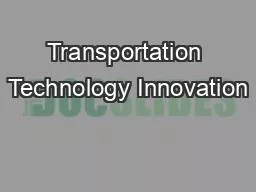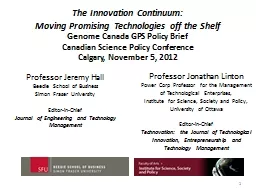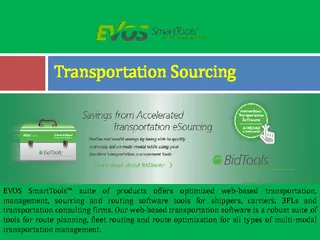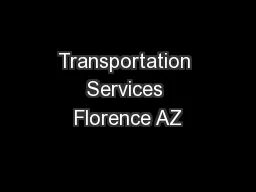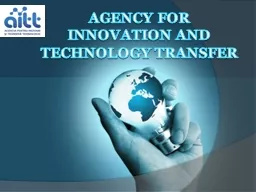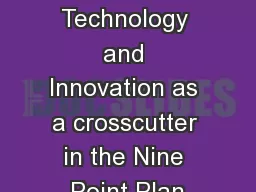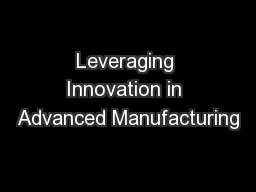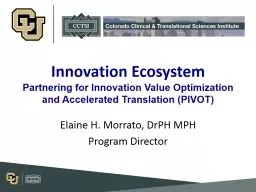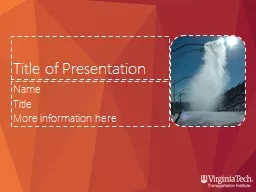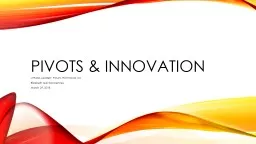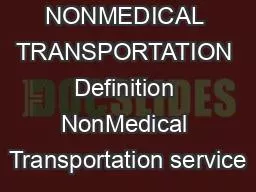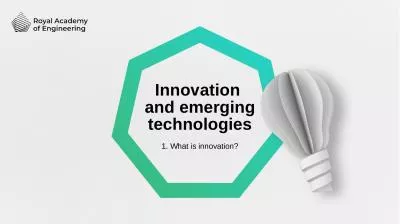PPT-Transportation Technology Innovation
Author : studyne | Published Date : 2020-08-28
Workshop Lisa Kennedy June 5 2018 Guiding Client Companies to Value Through Digital Strategy Planning and Execution 2018Tompkins International Welcome to the
Presentation Embed Code
Download Presentation
Download Presentation The PPT/PDF document "Transportation Technology Innovation" is the property of its rightful owner. Permission is granted to download and print the materials on this website for personal, non-commercial use only, and to display it on your personal computer provided you do not modify the materials and that you retain all copyright notices contained in the materials. By downloading content from our website, you accept the terms of this agreement.
Transportation Technology Innovation: Transcript
Workshop Lisa Kennedy June 5 2018 Guiding Client Companies to Value Through Digital Strategy Planning and Execution 2018Tompkins International Welcome to the 2hour workshop on logistics technology innovations We will have a presentation on the progress to date of selfdriving technologies followed by breakout into groups to discuss the effects of these technologies on transportation and warehousing. PREMIER Transportation Services, we are proud to take this opportunity to formaly introduce our mission statement to you. Whether you require a Car's, SUV's, Van's or Limo Service to meet your ground transportation needs, you can rely on our service to provide you a cost-efficient experience you deserve. Moving . Promising Technologies off the Shelf. Genome . Canada GPS Policy . Brief. Canadian Science Policy Conference . Calgary, November 5, 2012. Professor Jeremy Hall. Beedie. School of . Business . EVOS SmartTools™ suite of products offers optimized web-based transportation, management, sourcing and routing software tools for shippers, carriers, 3PLs and transportation consulting firms. Tumbleweed Sedan is more than just any normal car service. We provide an experience to our clientele like no other. All of our vehicles come with the most professional and knowledgable drivers. The vehicles are no older than 2012, so that we are always able to offer our clients the very best ride that they will get anywhere. Oyr vehicles are always meticulessly maintained as well as detailed on a regular basis. You will always be greeted by a professionally dressed driver with a smile. Republic of Moldova – Research & Development. Population: 3,4 million. 34 Research Institutes. 13 Universities. 3 Science and Technology Parks . 6 Innovation Incubators. Investment in R&D. : 0,47. Dr Phil Mjwara. 14 June 2017. Presentation Outline . What. is . the. Nine . Point. Plan? . How. . does. STI . support. . the. Nine . Point. P. l. an. ? . Science. , . Technology. . and. . Innovation. . Avimanyu Datta, Ph.D.. Seminar in Management: Innovation and Entrepreneurship. . Overview. Several dimensions are used to categorize innovations.. These dimensions help clarify how different innovations offer different opportunities (and pose different demands) on producers, users, and regulators.. Carolina Innovations Seminar. Kirsten Rieth. April 5, 2012. Why care about innovation in manufacturing?. U.S. manufacturing is important. Constitutes 11% of GDP . Employs 12 million people . Pays an average of $77,186 annually, including pay and benefits. and Accelerated Translation (PIVOT). Elaine H. Morrato, DrPH MPH. Program Director. CCTSI Organizational Structure. Our academic . innovation ecosystem.. CSU Institute for Biological and Translational Therapies. Justin M. Owens, Ph.D.. Senior Research Associate. Center for Vulnerable Road User Safety. Virginia Tech Transportation Institute. TRB Workshop ANF10(3). Pedestrian and Autonomous Vehicle Interactions Subcommittee. Elizabeth Gail McClenney. March 29, 2018. An Odyssey . …. Our Context . …. Pivot. – “a person, thing, or factor having a major or central role, function, or effect”. Disruption. – “ to interrupt the normal course or unity of”. allow payment for trips that are submitted after the 90day timeperiod These requests will be considered on a casecase basis provided valid justification is given Reimbursement for travel can be denied 1. What is innovation?. Practitioner. guide. 1. What is innovation?. 2. Introduction and overview. These resources help practitioners to deliver innovation and emerging technologies components of engineering and manufacturing-related qualifications at levels 2 and 3.. Presentation title. Swinburne Biosafety Committee. Biosafety Training Module. SCIENCE | TECHNOLOGY | INNOVATION. Swinburne Biosafety . Committee (SBC) . . The SBC is responsible . for reviewing and approving Swinburne activity (research and teaching) or facilities involving: .
Download Document
Here is the link to download the presentation.
"Transportation Technology Innovation"The content belongs to its owner. You may download and print it for personal use, without modification, and keep all copyright notices. By downloading, you agree to these terms.
Related Documents

